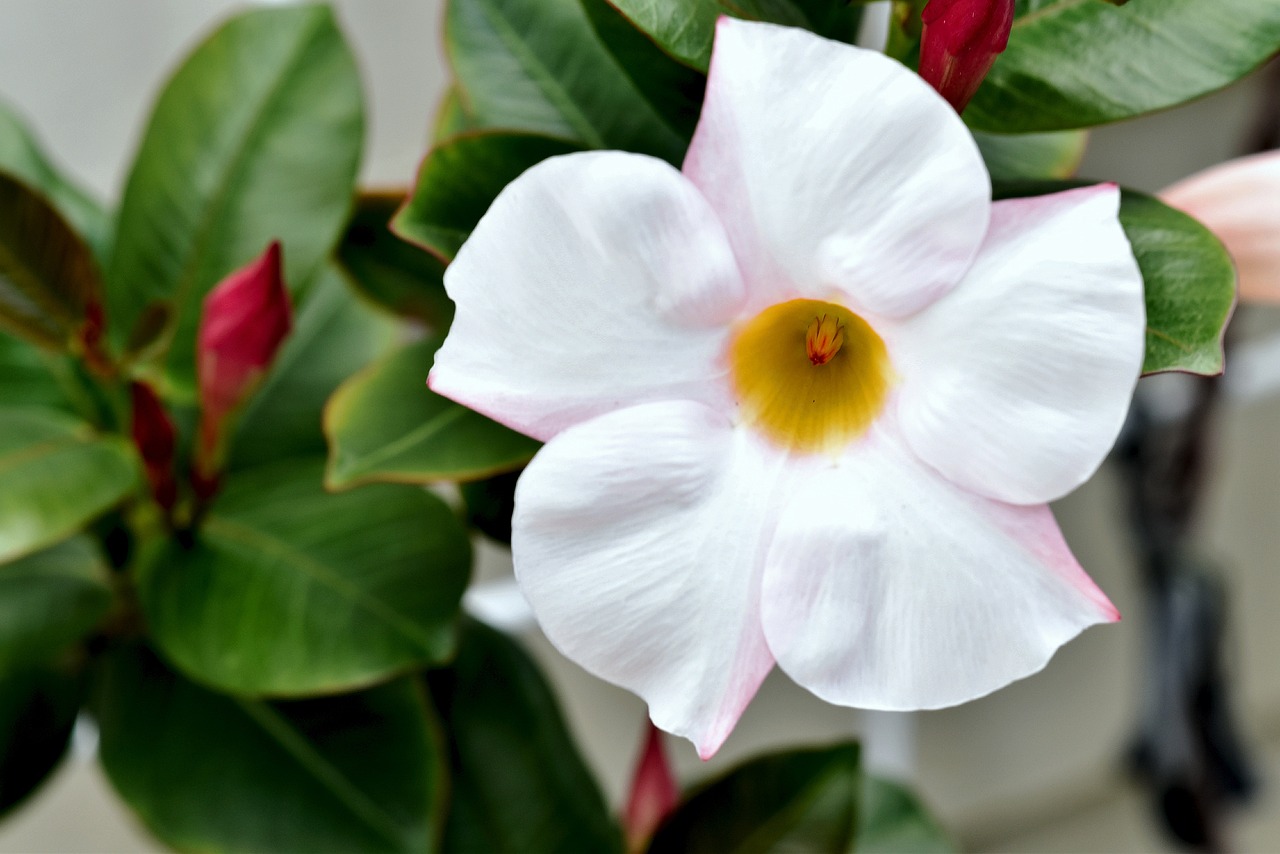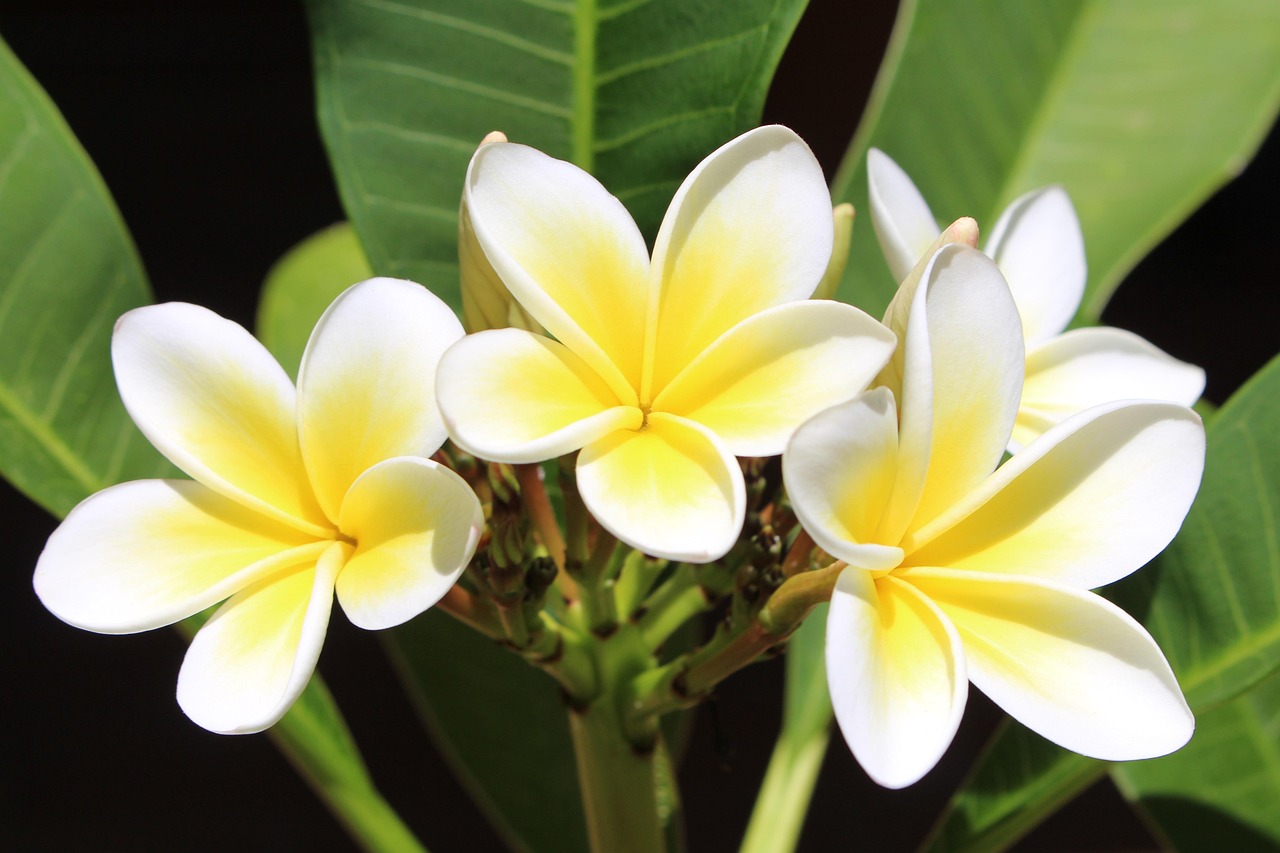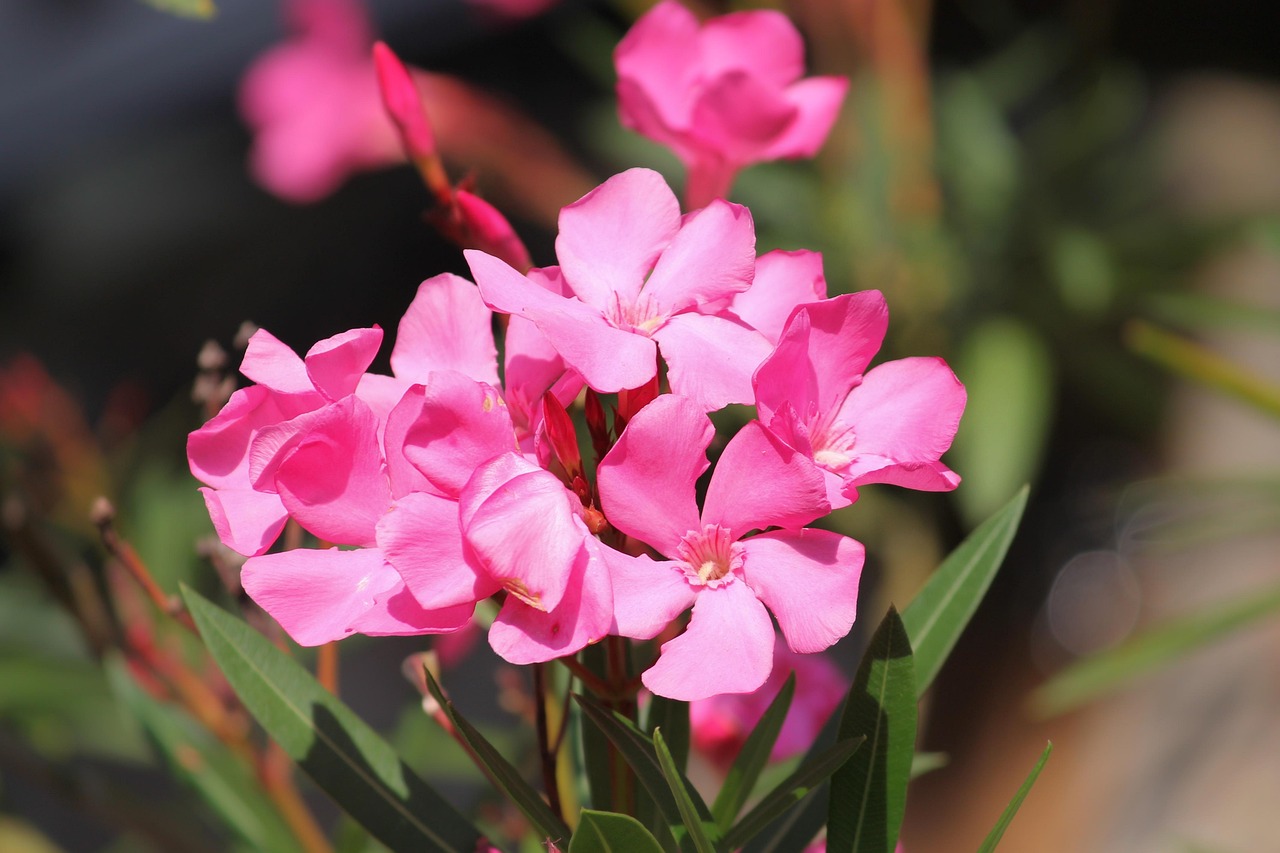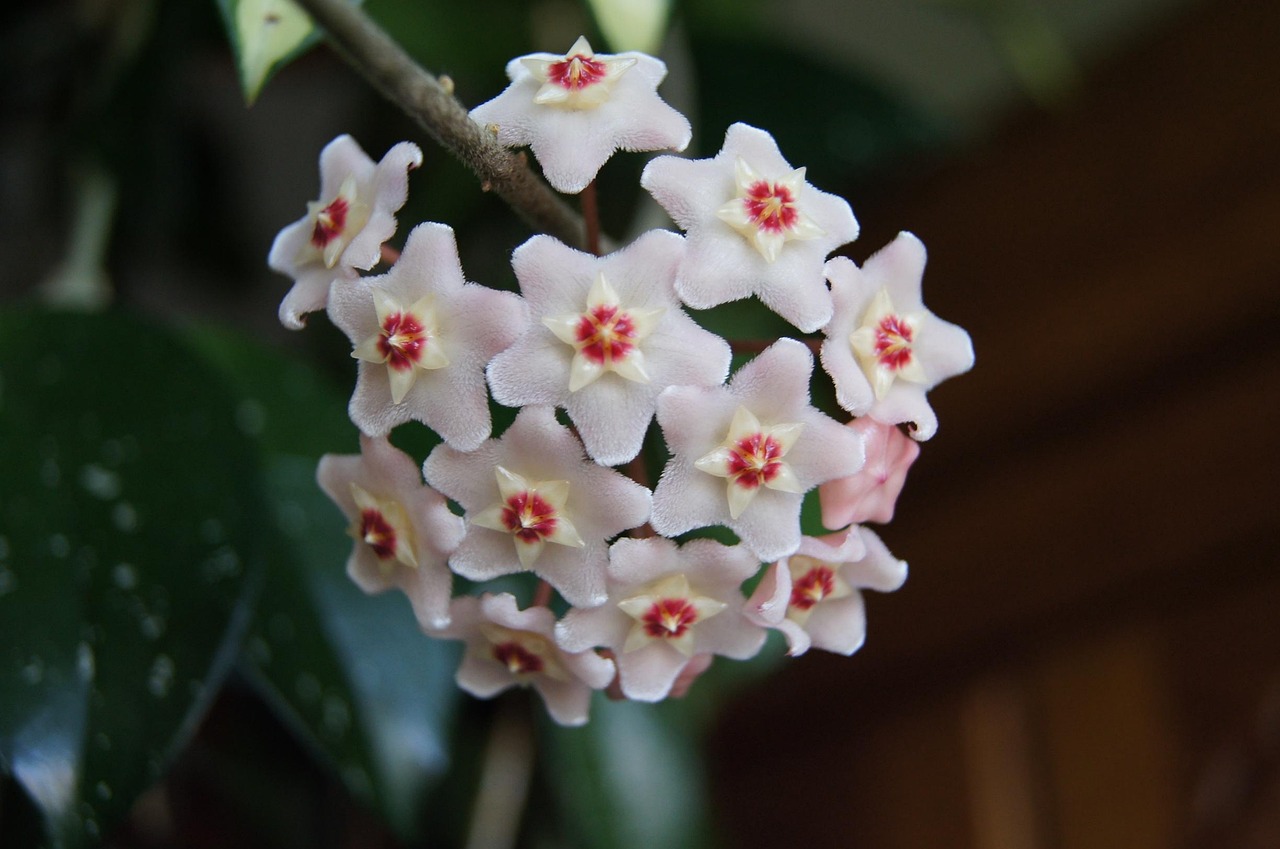Periwinkle | The Blue-Purple Vine That Covered Monastic Gardens
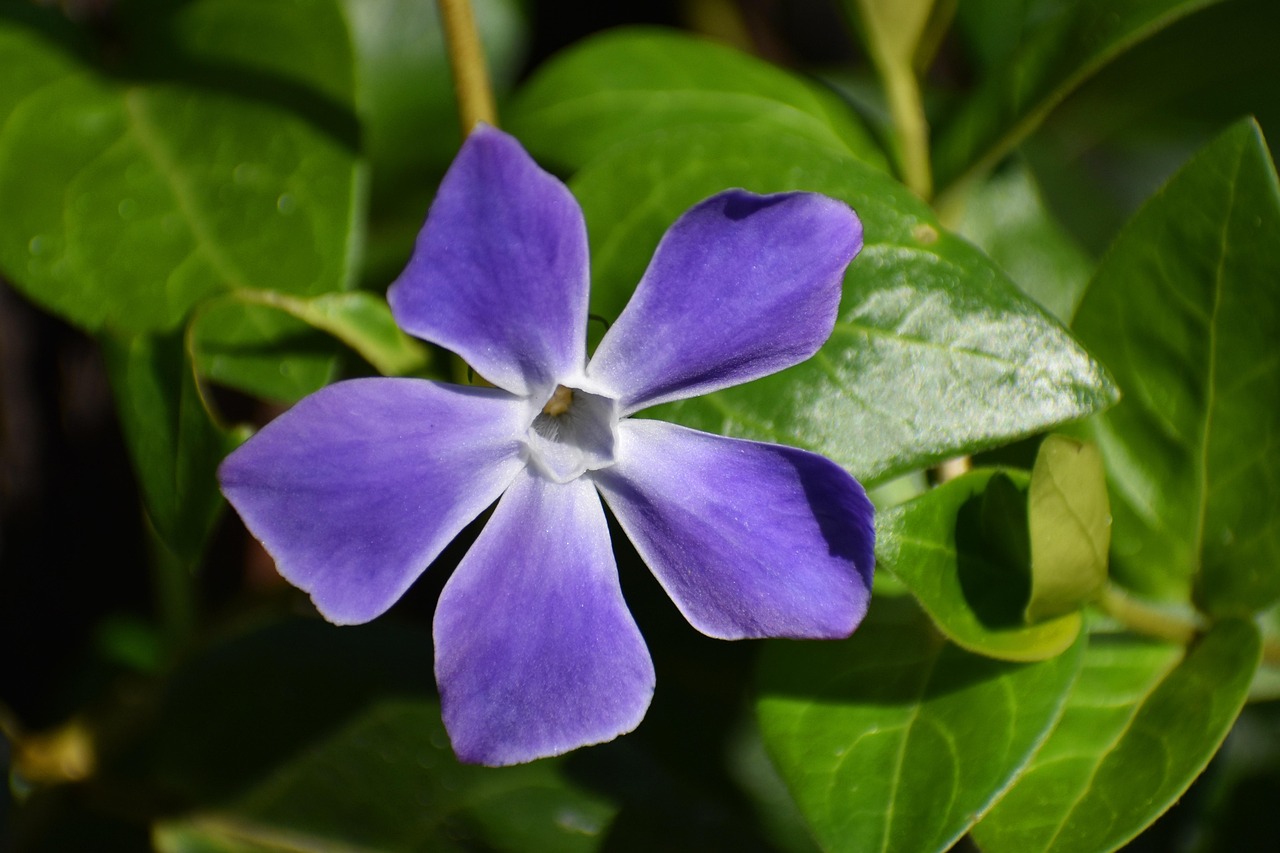
Periwinkle is a perennial plant distinguished by its vibrant flowers and trailing stems. It is widely used as ground cover and is also well suited for landscaping gardens and parks.
In this article, I explain in detail the basic information, cultural and historical background, and cultivation methods of periwinkle.
Basic Information
- Scientific name: Vinca major / Vinca minor
- Family: Apocynaceae
- Origin: Europe, North Africa, West Asia
- Appearance: Periwinkle spreads across the ground with trailing stems. The leaves are glossy, oval-shaped, and dark green. The flowers are bluish-purple or white, blooming mainly from spring to early summer.
- Blooming season: Mainly from April to June, though in warm regions it may bloom throughout the year.
Cultural Significance Around the World
Periwinkle has long been cherished across Europe and holds symbolic meanings in many cultures.
In France and Germany, its evergreen leaves symbolize “eternal life” and “unwavering affection,” and the plant is sometimes used in wedding or anniversary decorations.
In England, it was often planted in monastic gardens during the Middle Ages. Monks loved it as a flower that brought serenity and peace. It also appeared in old poems and folklore as one of the symbols of garden beauty.
In Eastern Europe, periwinkle is traditionally planted around houses as a symbol of prosperity and happiness.
Historical Episodes
The history of periwinkle dates back to ancient Rome, where it was already cultivated as a garden plant. The Romans valued its durability and beauty, planting it in urban gardens and palaces.
In medieval Europe, it was often planted in monastery and castle gardens, where monks treated it as a “sacred herb.” In monastic gardens, periwinkle was used as hedges and ground cover, maintaining greenery throughout the year and providing a tranquil atmosphere for meditation and prayer.
By the 19th century, its use as a landscape plant spread widely across Europe. In England and France in particular, it became an important element of garden design.
Gardening Advice
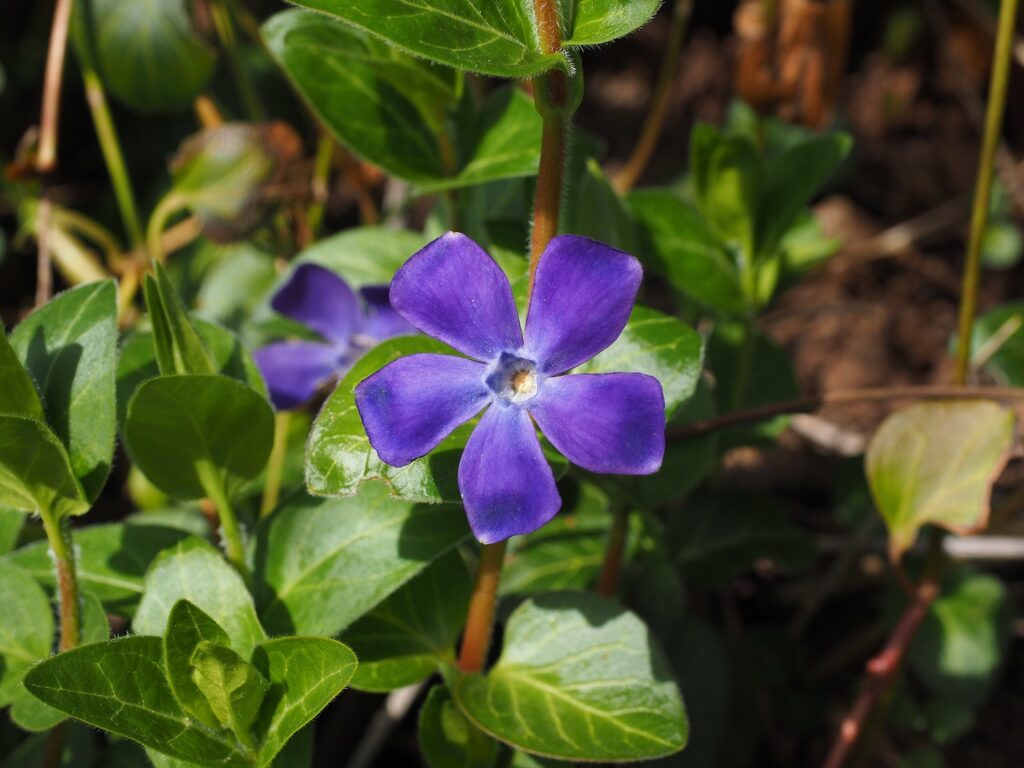
Periwinkle is hardy and easy to care for, thriving both in gardens and containers. Here are some key points for cultivation:
Sunlight
Adaptable from partial shade to full sun, though brighter areas produce more flowers.
Watering
Water when the soil surface becomes dry. While fairly drought-tolerant, prolonged dryness can damage the leaves.
Soil
Well-drained soil with moderate water retention is ideal. Mixing compost or leaf mold works well.
Fertilizer
During the growing season, apply a slow-release fertilizer about once a month to enhance leaf color and flower production.
Pruning
Trim overgrown vines to maintain shape. Moderate pruning encourages new shoots.
Cold tolerance
Fairly resistant to cold, but in harsh climates leaves may be damaged in winter. For potted plants, it is best to move them indoors during the cold season.
Conclusion
Periwinkle, with its trailing green leaves and vivid blossoms, is widely used as ground cover in gardens and parks.
In Europe, it symbolizes eternal life and affection, and in medieval monasteries it was planted to bring tranquility.
Already valued as a garden decoration in ancient Rome, by the 19th century it was widely cultivated in parks and gardens throughout Europe.
By ensuring sufficient sunlight and well-drained soil, you can enjoy the beauty of periwinkle both in the garden and in pots.


